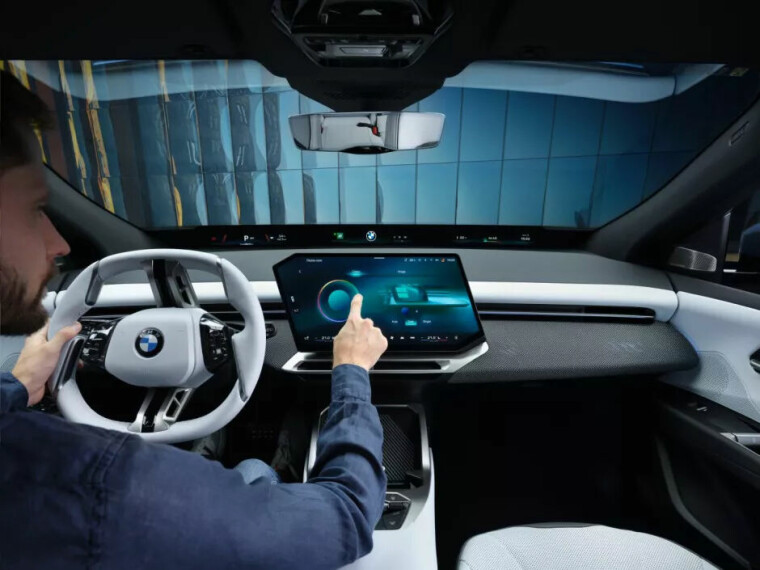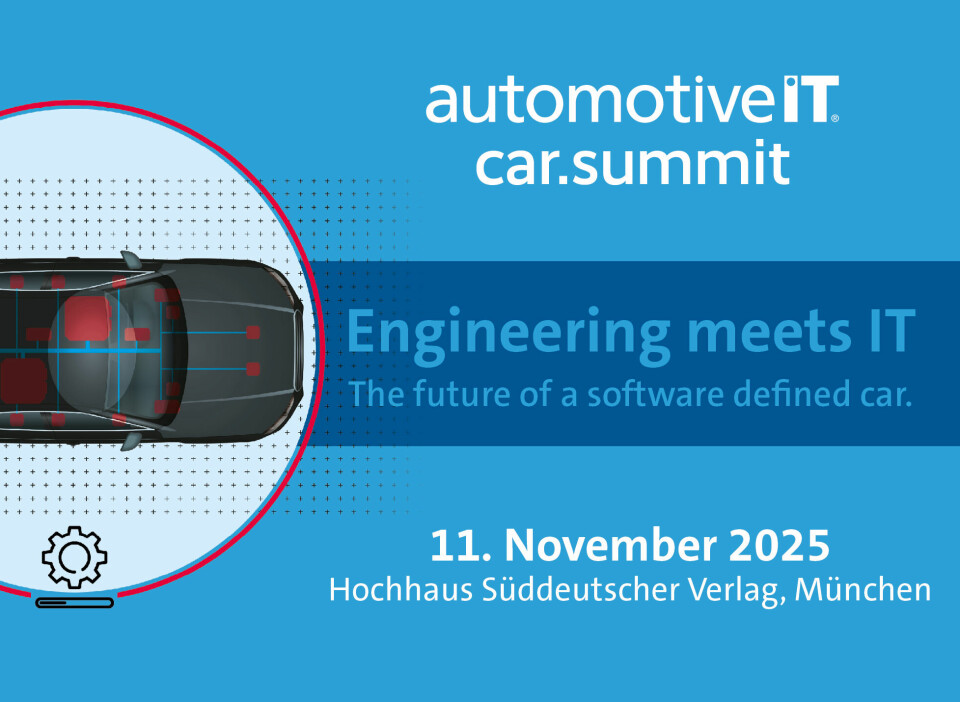Software Defined Vehicles
Digital car
How the automotive industry is rebalancing HMI

Huge displays were considered the future of cars. Today it is clear: drivers want buttons back, intuition and safety are coming into focus. Suppliers like Kostal and Preh are developing hybrid HMI concepts for the next digital era.
In recent years, the motto in the automotive industry seemed to be: more displays, larger screens, more digital functions. The early years of the digital car were marked by a veritable display euphoria. Manufacturers like Tesla set standards with large touchscreens that found imitators. Increasingly, huge screens made their way into cockpits, and touch gestures replaced physical controls. But much like in the kitchen, where you eventually stand and wonder if the toaster really needs to be connected to Wi-Fi, it seems the digitalisation of the vehicle interior has somewhat overshot its target.
"Audi is increasingly dispensing with classic switches: even the light, mirror, and central locking functions are integrated into touch-sensitive surfaces in the door area, which proved to be imprecise and fiddly in tests. The capacitive buttons on the steering wheel follow the same principle - not very tactile, difficult to operate accurately," criticises Tim Gilgen, editor of automotiveIT, and probably hits a sore spot, as for many drivers, operational depth, menu complexity, and distraction while driving have become a real problem.
This is how closely HMI elements & cybersecurity are connected
Digitalisation begins long before the journey. Kostal therefore relies on new access methods, based on ultra-wideband (UWB) and Bluetooth low energy, where the smartphone replaces the traditional car key. Senior Director R&D Comfort Controls Andreas Pirchner emphasises: “Typical attacks, such as relay attacks, where someone intercepts the communication between the key and the vehicle to capture the data transmission, no longer work here. With our system, the position of the smartphone can also be verified. The vehicle only opens if the driver is directly in front of the door.” This new solution makes it clear: digitalisation has made the vehicle more vulnerable. Cybersecurity is no longer a sideshow, but an important part of every HMI architecture.
The decisive factors for the security requirements of digital solutions include the existing interfaces, integration into the vehicle architecture, and the possibilities for software or over-the-air updates. “If products are flashable, meaning if software can be installed later, the security requirements increase significantly,” says the Kostal manager. To assess risks, Kostal conducts so-called TARAs (threat analysis and risk assessments). This involves checking how easily an attacker could gain access via provided interfaces and what the consequences of such access would be. Particular caution applies to control elements on the steering wheel, such as for ACC (adaptive cruise control): “If I have software in there, I don’t want anyone else but myself to take control.”
In the automotive HMI context, safety also means usability. The more complex it is, the greater the distraction from traffic. Pirchner points to upcoming Euro NCAP ratings, which foresee point deductions for core functions that are difficult to reach: "If I have to start by finding my seat adjustment or climate control somewhere in a complex menu, it distracts me from the actual driving," he emphasises. Operating logic, haptics, and cybersecurity thus form a common axis for the next stage of digitalisation. Pirchner also refers to the role of iconic control elements. Displays alone would homogenise cockpits, while haptic elements are capable of conveying brand identity.
From screen frenzy to a balance of hybrid solutions
At supplier Preh, the limits of full digitalisation are also seen as reached. Senior account manager and customer expert Steffen Reich reports: "From our perception, it is such that the end customer increasingly has difficulties with the amount of pure touch displays and the intuitive accessibility of submenus. Especially while driving, for example on the motorway, the distraction from the road poses a real safety risk. A combination of traditional HMI elements, such as a rotary controller, and large displays offers a significant added value. Our own concepts and discussions with customers are also moving in this direction." Additionally, the Preh manager highlights another aspect. The outer bodies of new models are increasingly resembling each other due to the trend towards aerodynamics, so that classic external distinctions are lost. Differentiation of vehicles will therefore take place even more strongly in the interior in the future.
For OEMs, the cost question arises at the same time. Different target groups, whether measured demographically or culturally, demand different operating concepts, but each additional cockpit layout means more effort. "Manufacturers cannot develop different designs for each buyer group for cost reasons. They are therefore forced to find compromises. These compromises consist of developing a uniform design, form, and function language that meets the needs of as many customers as possible," explains Reich. "Those who like to interact via voice assistance should have this opportunity in the car. At the same time, there must be the possibility for those who do not want to or cannot use voice, such as a father with two restless children in the back seat, to operate the same functions directly via the centre console." For car manufacturers, there is therefore a need for hybrid and adaptive concepts.
Such hybrid concepts ideally combine haptic orientation with digital flexibility. Kostal, for example, develops switches with hidden functions ("Secret Tilit") that only become visible when needed. Such concepts also open up new business models: "Function on Demand" makes features visible as soon as they are unlocked via software. For manufacturers, this means the possibility of upgrading vehicles flexibly after delivery.
The sweet spot for HMI lies in the golden middle
The second wave of digitalisation in cars is therefore less characterised by show effects. Instead, usability, safety, and differentiation are moving more into the foreground. Pure touch surfaces are reaching their limits, and traditional control elements are gaining importance again. They are not considered a step backwards but as part of hybrid control concepts that combine digital and tactile elements. For manufacturers, it becomes a task to take intermodality seriously. Different age groups, markets, and cultures expect solutions that can be flexibly combined and consider both familiar and new ways of operation. Human-machine interfaces are thus developing into a central distinguishing feature in competition. Whether button, rotary control, or display - the crucial factor is that every customer finds an interface that meets their expectations. The challenge for the industry is to unite this diversity while creating a driving experience that remains intuitive, safe, and distinctive.
This article was first published at automotiveit.eu


